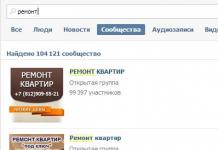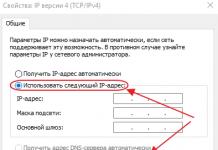These two concepts are commonplace in the field of international economic relations. However, not all ordinary citizens clearly understand the difference between them.
If the goods are exported from the country
Any country strives to expand its exports. If she sells goods needed abroad, she receives foreign currency. In turn, the country purchases the foreign goods it needs for foreign currency. The one who sells goods abroad is called an exporter, and the one who purchases them is called an importer.

When exporting, goods (services) are taken abroad by the exporter, and he is not obliged to return them back. Together with operations for importing goods, exports form the basis of international trade.
Export can be carried out through:
- Export of products that are manufactured, grown or mined in the exporter’s territory.
- Deliveries of semi-finished products or raw materials to another country for processing there.
- Export of products received from other countries for sale in third countries.
- Providing production or consumer services to foreign companies
- Investing capital in your own foreign production.

The legislation of a particular country may also refer to other products that cross the customs border of the exporter as exports. Often, goods intended for export to one country are adapted for sale in others or for sale on the domestic market. Re-export is also used, which involves the import of raw materials or semi-finished products with their subsequent sale without processing on international markets.
Almost two hundred countries are engaged in export. The share of twelve of them in world trade is about 60 percent. Of these, Germany, China, the USA and Japan export a third of everything these twelve countries sell. The European Union ranks first in terms of export volume.
What is import
Import assumes supply of goods and services from abroad without the obligation to take them back. The difference in the volumes of exports and imports shows the balance of the country's foreign trade, and their sum shows the trade turnover. Import calculations are made taking into account the cost of the goods, freight and insurance costs. Therefore, the value of exports to the world is reduced by the amount of these costs. Foreign suppliers of goods to the country provide high quality and lower prices than local manufacturers. They usually import products that are not available in the importer's domestic market.

Various import schemes are used, including searching around the world for promising products for import and sale, foreign suppliers offering the lowest prices. Today, import schemes involving a local distributor and a manufacturer abroad are common, when goods are purchased without intermediaries directly from the manufacturer.

Usually the state seeks to regulate imports. For this purpose, quotas, duties, minimum import prices, technical obstacles, import taxes, etc. are used. This is usually done to create preferences for domestic producers and replenish the budget. This policy is called protectionist. With a liberal policy, restrictions are minimal.
How are exports and imports regulated?
Export and import are regulated in each state and at the international level. In most countries, this is done by the government and the ministry of trade or foreign economic activity. They are governed by special legislation. Companies exporting their products have special foreign trade divisions. Specialized banks usually finance foreign trade operations.
In 1995, the functions of regulating international trade relations were assigned to the World Trade Organization (WTO), which is a UN agency. It declares the principle of freedom of exchange of goods and services in the world, which helps ensure economic development and growth in people's well-being. It includes more than one and a half hundred states, together accounting for 95% of the turnover of goods and services in the world.

Its task is to eliminate restrictions and obstacles in trade relations between countries. It is guided by the general agreements signed by all member states regarding trade in goods and services and intellectual property rights.
For this WTO:
- Analyzes compliance with the requirements of its member policy documents.
- Considers disputes between states regarding their foreign trade policies.
- Organizes interaction with other international bodies.
- Provides assistance to countries with developing economies.
What is the difference
Export is an activity aimed at exporting goods and services produced in it abroad. Such activities are stimulated by the state.
Import means the legal entry of goods from abroad. Often states, in the interests of their companies, set import restrictions.
Gone are the days when countries could live without exporting and importing goods and services. And now no one is forcing anyone to open their countries to goods from other countries, as was the case in the 18th-19th centuries, when European countries forced China, Japan and Korea to open their markets by force of arms. These Asian countries, having seen what import and export were like "European style", banned European merchant ships from entering their ports. But trade wars continue. Countries, on the one hand, are trying to close their markets to protect local producers, and on the other, to obtain maximum favorable treatment for their exporters.
What is import and export
Since ancient times, world trade has been tied to waterways. They tried to send the main flows from country to country by ship, the only transport that existed at that time that could transport a lot of goods. This is how the concept of “export” appeared, which comes from the Latin word exporto, which literally means “to remove goods from the port.” For the concept of import, the Latin word importo was also used, which means “import”.
Now everything that is sold from one country to other countries is called export, and everything that is purchased from other countries is called import. Of course, since the days when ships carried spices from India or Inca gold to Europe, the idea of what imports and exports are has changed a lot. Now not only goods are the subject of international trade, but also services and capital.
Products first, then the rest
Goods still remain the majority of global trade. Every year, more than $16 trillion worth of goods are shipped from one country to another. Information and communication technology products are purchased most of all, followed by fuel, food and agricultural raw materials. In the structure of world exports, the largest share falls on fuel. The largest exporters are China, the USA and Germany, and in the top three importers the USA and China swapped places. These countries trade mainly in products with high added value - machinery, means of production, equipment, consumer goods. The US is also the largest exporter of agricultural products.

In addition, there is regional specialization. Developing countries export minerals, agricultural raw materials, chemical and light industry products, that is, those whose production requires large labor costs or is characterized by harmful conditions. East and Southeast Asia are known as the global center for consumer electronics, while Europe is known for luxury goods.
We sell money too
Capital knows no boundaries; since ancient times it has moved from country to country to obtain a higher rate of profit. The main exporters are developed countries - the USA, Great Britain, Germany, France, Japan, the Netherlands, Switzerland - and international financial institutions (World Bank, International Monetary Fund and others). Capital exports take the form of direct and portfolio investments, loans and any financial instruments that must be paid for in foreign currency. For example, China and Russia are the largest buyers of US Treasuries, which is an example of the export of government capital. The majority of capital exports and imports are in financial services, telecommunications, chemical and pharmaceutical industries, and energy.
Service for sale
The fastest growing and knowledge-intensive sector of the economy, services, produces about 65 percent of the world's gross domestic product. The growth rate of exports and imports of services is growing much faster than trade in goods. The volume of global trade in services has reached $5 trillion. Until recently, tourism, transport, hotel, insurance and financial services occupied the first positions in international trade in services.

In recent decades, the first place and a significant share in trade in services is occupied by communication and information services - more than 45 percent in both imports and exports. So far, the tourism industry is in second place in terms of export-import volumes. The largest countries exporting services are the USA, Great Britain and China, importers are the USA, China and Germany.
We help you buy and sell
Long gone are the glorious ancient times when all that was needed to sell a product to another country was courage and business acumen. Now it is an entire industry providing 20 trillion in global trade in goods and services. This service industry probably knows best what import and export are.

Export-import services include: marketing, transport services, insurance and financing, customs clearance, legal support. To import products, except those requiring special permits or licenses, you need to fill out from 2 documents, as in the USA, to 13, as in Uzbekistan. For export in developed countries, 2 documents are required, and in the Central African Republic - 17.
Top 10 in world trade
With the deepening of the global division of labor, international trade is playing an increasingly important role. He who trades better lives better. The top 10 best countries for exports and imports differ slightly. The list of the world's largest exporters includes Hong Kong and Italy, which take the place of Canada and India, which were among the largest importers.
The top 10 largest exporters and importers are 4 Asian, 5 European countries and the United States, and they sell more than 40 percent and buy about 60 percent of all goods and services in the world.
Who is almost absent in world trade
In addition to Tuvalu and Nauru, which are known to all Russians, which recognized the independence of Abkhazia and North Ossetia, there are several more island countries of the same kind that actually live on a subsistence economy and almost do not know what imports and exports are. Exports from such countries range from 60 thousand to 1 million dollars, imports - less than 20 million US dollars. And there is one unique state in the world - Tokelau, which in some years does not sell anything at all to the outside world.

The country is part of the kingdom of New Zealand and lives off fishing and money sent by relatives from abroad. A significant portion of the income comes from aid to New Zealand. But, surprisingly, Tokelau is no stranger to high technology. This is the only country in the world that has completely switched to solar energy.
What does Russia trade?
Russia has the richest mineral reserves in the world and actively trades them on the world market. In the world ranking of international trade, Russia's exports and imports rank 15th and 16th in the world, respectively. The largest export items are oil and petroleum products, natural gas, metallurgical products, chemical products, timber, engineering products, weapons and wheat. Hydrocarbon raw materials account for about 63 percent of the export structure.

Russia ranks second in arms sales and third in grain supplies. The country buys machinery and equipment the most - approximately 51 percent of the country's imports, and 11 percent are passenger cars. The structure of Russia's imports and exports is gradually changing, new large export items are appearing, for example, wheat, liquefied gas, while at the same time it has been possible to almost completely abandon the purchase of pork and poultry meat, and grains.
Export and import are the two main mechanisms of the external and internal economy of any country. These are two opposite directions of international trade, allowing one to judge the level of economic development of a country.Import refers to the import of goods into a country from other states, but, on the contrary, the export of goods produced in the country and their sale in the territory of other states. A product can be not only industrial goods, but also raw materials, various services - everything that is in demand in the global economy.
A country that exports products and sells them in other countries as an exporter. A country that accepts foreign or imported goods into its market is called an importer. Products manufactured within the country are national goods.
Features of export and import, or what is a “balance”?
All countries, without exception, act as importers. In some countries, imports prevail over exports, and in others, on the contrary. Imports and exports are calculated by summing up all goods exported abroad and imported into the country. The difference between the resulting amounts is denoted in economics by the concept of “balance.”To find out whether a country has a positive (active) or negative (passive) balance of foreign trade, it is necessary to subtract the sum of the prices of imported goods from the sum of prices of exported goods. If more is exported from the country than is imported, then the balance will be active or positive, but if more is imported, then the balance of foreign trade will be passive and the difference obtained in the calculations will be negative.
Developed and developing countries
Manufacturing industry and its products account for the largest share in the exports of developed countries. These are mainly various equipment and machines. Their foreign trade is usually focused on the same economically developed countries, which are united by a high level of division of labor and narrow specialization of hired workers. According to the UN, developed countries include Canada, the USA, Japan, European countries, New Zealand and Australia.The structure of exports of developing countries is dominated by tropical agriculture and mining industries. A high percentage of raw materials in the export structure hinders the development of the state’s economy, as it makes it dependent on prices on the world market, which are not constant. According to the UN, developing countries include Russia, China, and other countries in the Middle East (Iran, Kuwait and others).
Today, there is no universally accepted classification of countries by type of developed and developing (less developed) economy.
Since Soviet times, the word “import” has firmly taken its place in the dictionary. Almost everyone knows that this term means the import of various goods, services, technologies, developments, and works into the territory of the state from abroad without the obligation to export them back. But who is an “importer”? This is a fairly broad concept that is worth considering in more detail.
Definition of the concept
From an economic point of view, an importer is an individual or legal entity engaged in the import of any goods from another country. Various services received abroad can also be imported.
If we take a broader concept, then an importer is a party to international economic cooperation that is engaged in the purchase of goods, services, labor, capital, etc. abroad and importing them into the territory of its country for use or consumption.
The exchange of goods between different partners has always taken place within the framework of international trade relations. Since ancient times, there has been a natural exchange of food, fabrics, and various household items. The principles of import-export operations have remained largely unchanged, although their scale has increased and payment and sales technologies have been improved, customs and new tax instruments have appeared.
Who is the importer
Who has the right to bear the title “importer”? This can be an individual entrepreneur, a company, a corporation, or an organization. This term is sometimes even applied to states that actively import certain goods from abroad.
Financiers consider two categories of signs by which an importer can be identified:
- the ability to cross the border and go through customs with all the necessary documents drawn up in accordance with international rules and certificates;
- import of products and goods into the customs territory of the state.
If we combine all these signs, we come to the conclusion that an importer is a person who has the right to cross the border in accordance with international rules and import goods from abroad into the territory of his country.

Goods for import
In modern conditions, external economic ties are constantly strengthening and receiving different expressions. Thus, through trade exchange at the international level, the problem of shortage of a particular product in those regions where it is not produced is solved.
The subject of foreign trade activities can be a wide range of goods and services, as well as the results of intellectual activity (including innovations, new technological projects and developments). All this is mandatory regulated by modern laws. For example, importing countries that do not own mineral deposits purchase oil, coal, and iron ore from other countries. At the same time, these same powers can produce iron ore products and export finished products.

The situation on the domestic market
Today, a variety of goods imported from near and far abroad countries are supplied to the Russian Federation market:
- household and medical equipment;
- light and heavy industry products;
- food products (baby food, dairy products, vegetables, fruits);
- production equipment;
- scientific and applied developments and technologies;
- trucks and cars, auto parts.
Over the past few years, the Russian Federation has entered into agreements on trade exchange and foreign economic trade cooperation with many countries. These include the CIS countries, the European Union, as well as China, Brazil, India, etc. Russian importers supply the country with cars, machinery, equipment, medicines, ferrous metals, clothing and footwear, petroleum products, synthetic rubber, chemicals (for care and plant protection), tea, coffee, agricultural products, food, textiles, etc.
Import (from Latin importo) - import into the country of goods, works, services, results of intellectual activity, etc. to the customs territory of the country from abroad without debts for return export.
Imports (in economic theory) are the expenses of individuals, firms and governments to purchase goods and services produced in other countries.
The import country is the country of origin of the product, while the export country is the destination country of the product.
Re-import is the import of goods that were previously exported but not processed.
Import - bringing into the country foreign:
- * goods and technologies for sale on the domestic market or transit to third countries;
- * services - in the form of paid use of the services of foreign companies;
- * capital - in the form of loans and credits.
Indirect import - import of components of trade items or semi-finished products used in imported machinery and equipment. Parallel import Arbitrage, in which the importer buys a product in one country and sells it in another, where prices are higher.
Imports are calculated on the basis of CIF prices (CIF - acquisition cost, insurance, freight), i.e. it includes price, insurance, freight, in connection with which the price of world exports will always be less than the cost of imports by the amount of the insurance premium, freight of the vessel for transportation, etc. port taxes.
Typically, imports are an important subject of government regulation. Such regulation can be implemented through the following trade policy instruments: specific and ad valorem duties, technical barriers, quotas, “voluntary” export restrictions, establishing minimum import prices, etc. Import restrictions are simply introduced for protectionist purposes (to protect national producers from competition). Import taxes can also be imposed for fiscal purposes (treasury replenishment).
The degree of import regulation depends on the chosen type of trade policy of the state (Liberal policy - Protectionism).
The volume of imports depends on the size of export earnings and foreign exchange reserves of the country. The fact of import is emphasized by customs statistics. Import acts as a result of the international division of labor, helps to save time and better meet the needs of the national economy. There are visible and invisible imports. Imports are regulated by national legislation, political and legal restrictions, customs tariffs, licensing systems and other non-tariff measures of foreign economic regulation.
Import - import from abroad of goods, technology and capital for sale and application in the domestic market of the importing country; receipt of paid production or consumer services from foreign partners. As a consequence of the international division of labor, imports help save time and better meet the needs of the national economy and population. The volume, structure and range of imports are related to the scale of the national economy, its provision with various resources, and the level of production and scientific and technical development. The volume of imports also depends on the size of export earnings and foreign exchange reserves of the country. The fact of import is recorded by customs statistics, mostly on CIF terms. In the context of the increasing role of cooperative, industrial and scientific-technical cooperation, the import of goods (raw materials, semi-finished products, components and parts) for processing in a given country and subsequent export abroad, as well as the import of goods of domestic origin that have been processed abroad, is increasing. Finally, the object of import is goods temporarily imported (for exhibitions, markets, public auctions). Imports of production and consumer services, particularly in the form of tourism, are becoming increasingly important.
There are two main types of imports: imports of industrial and consumer goods, and imports of intermediate products (raw materials) and services.
Foreign companies importing goods and services into the country's domestic market strive to ensure that their quality is as high as possible, while the price is lower than that of products of domestic companies.
At the same time, foreign manufacturers strive to import into the country those types of products that for some reason are not available on the local market.
Currently, there are three main types of importers: 1) those searching for products all over the world for the purpose of importing and selling them on the domestic market; 2) engaged in searching for external suppliers in order to obtain products at the cheapest price; 3) using foreign suppliers as one of the links in their commodity supply chain.
Direct import refers to a type of trade importation involving a responsible distributor and a foreign manufacturer. This usually happens in the following way: the distributor (retail company) purchases products designed by local companies that can be manufactured abroad.
Under a direct import program, a distributor bypasses a local supplier (colloquially known as a middleman) to purchase the final product directly from the manufacturer, saving where possible on additional costs.
This type of commercial activity has emerged relatively recently and follows current trends in the global economy.
Import development
The concept of import comes from Latin. The verb "importo" literally translates as the import of products into a country's port. The ancient Greeks and Romans actively developed partnerships with neighboring lands. Every day, several ships left the port with food and other provisions for sale or exchange. The principle “you give me I give you” was the most effective. This is how precious stones, silk and other strange things came to the Moscow Principality. The modern interpretation of the term “import” contains economic overtones, but the main meaning has been preserved.

























